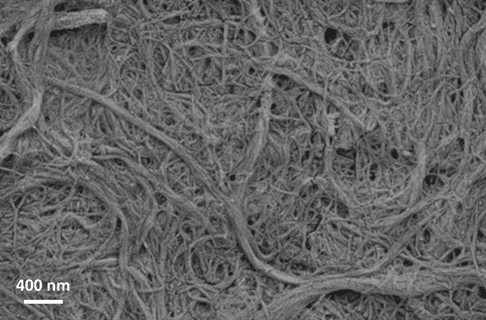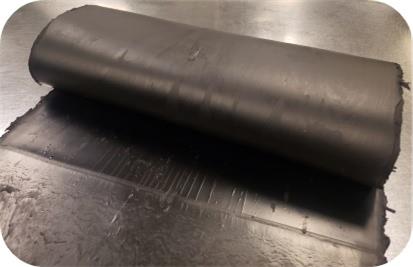BIRLA CARBON BLOG
INSIDER KNOWLEDGE FOR ALL THINGS CARBON BLACK
Nanocellulose Dispersion Composite (NDC™): A New Sustainable Alternative for the Rubber Industry
07 / 15 / 2021 by Dr. Lewis Tunnicliffe
Reading Time: 2.5 minutes
It is a clear ambition of the tire and rubber industry to increase the use of recycled and renewable raw materials in the pursuit of more sustainable mobility. Such materials include bio-derived process oils and feedstocks for synthetic rubbers, various recycled and reclaimed raw materials as well as bio-renewable reinforcing particulates. There is additionally a practical requirement that new sustainable raw materials have performance criteria at least comparable to that of petrochemical-derived incumbent materials. This is a clear technical challenge facing those tasked with developing and adopting such materials. In keeping with our Sustainable Operational Excellence (SOE) Strategy, Birla Carbon is committed to developing sustainable solutions for the Tire and Rubber industry (Find out more at https://sustainability.birlacarbon.com/).
One of the most promising bio-renewable reinforcements for rubber is a class of materials called nanocellulose. Nanocellulose in its various nanoscale forms constitutes the fundamental building blocks of biomass and can be derived from sources such as waste woodchips, agricultural and forest residues and purpose grown crops. As it is derived from sustainable biomass, nanocellulose has exceptional credentials as a green material. The morphologies and length scales of nanocellulose also make it an attractive option for rubber reinforcement.
A common drawback with using nanocellulose as a reinforcing agent in rubber is the difficulty encountered in dispersing nanocellulose, which has a polar surface chemistry due to the presence of surface hydroxyl groups, in non-polar diene rubbers such as NR, SBR, BR etc. In addition, commercial availability and cost effectiveness of nanocellulose have previously been road blocks to successful adoption of these materials by the tire and rubber industry.
Birla Carbon’s technical teams have been working closely with our partner GranBio for the last three years to develop an easily handled, pre-dispersion of nanocellulose in a rubber masterbatch form. This patent pending masterbatch is called Nanocellulose Dispersion Composite (NDCTM) and it offers an exceptional level of dispersion of nanocellulose for easy handling and implementation into a wide range of tire and rubber goods compounds. Depending on the application, the use of nanocellulose as a co-reinforcement with incumbent materials such as carbon black, offers benefits in compound hysteresis and dynamic modulus. These benefits could be leveraged for dynamic rubber applications – e.g. To improve the rolling resistance of tire or conveyor belt applications, or for improved isolation performance in anti-vibration applications.
The nanocellulose used in the NDCTM is produced via GranBio’s cost effective, scalable and patented AVAP® process and has commercialization approval from the US Environmental Protection Agency based on extensive EH&S testing. The nanocellulose has a nano-fibril morphology, which provides exceptional reinforcement in rubber and features a coating of lignin molecules on the cellulose surface which facilitates wetting of the fibrils by the rubber matrix.
We are continuously working to develop and expand the NDC™ technology platform, so keep an open eye for updates and announcements on this exciting new material. You can also check out our technical paper which details use of nanocellulose in rubber compounds – the paper is open access and free to download.

Dr. Lewis Tunnicliffe
Dr. Lewis Tunnicliffe is a lead scientist in the Birla Carbon rubber product development group. His work involves developing new types of carbon blacks and synergistic materials for enhancing rubber compound performance for the tire and rubber goods industries. Dr. Tunnicliffe joined Birla Carbon in 2016 and holds a Ph.D. in materials science (rubber materials) from Queen Mary University of London. He is interested in viscoelasticity properties and the fatigue and fracture of rubber materials.
WANT TO LEARN MORE ABOUT CARBON BLACK AND THE PROPERTIES THAT MAKE IT IDEAL FOR YOUR PLASTICS, COATINGS, AND INKS APPLICATIONS?











Leave A Comment